The Z-Morh Tunnel is a significant infrastructure project located in Jammu and Kashmir, India. It is being developed to provide all-weather connectivity to the popular tourist destination of Sonamarg, which is often cut off during the harsh winter months due to heavy snowfall. It is named after the Z-shaped turn (Morh) near Gagangir, where the tunnel begins. The Z-Morh Tunnel complements the larger Zojila Tunnel, which is under construction to connect Baltal with Minamarg near the Zojila Pass. Together, these projects will revolutionize connectivity between Kashmir and Ladakh, ensuring economic growth, better mobility, and enhanced national security.
1. This tunnel is located at an altitude of 8,652 feet above sea level. The 6.4 km long two-lane tunnel has been built on the Srinagar-Leh National Highway.
2. It has been built under the Thajiwas Glacier and this tunnel has been renamed as Sonamarg Tunnel. The construction of the Z-Morh tunnel costing Rs 2,400 crore began in May 2015 under the National Highways Authority of India (NHAI).
3. The tunnel is part of the Zoji La Tunnel Project Asia’s longest bidirectional tunnel, Zojila Tunnel (14.15 km) will ensure all-weather connectivity between Srinagar, Kargil and Leh.
Features of Z-Morh Tunnel
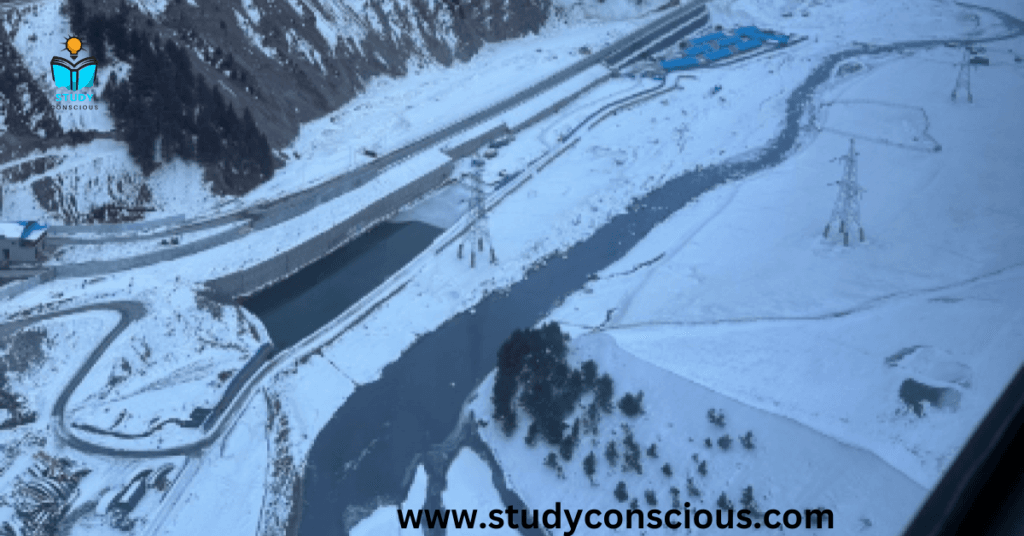
- Ventilation System:
- Equipped with a state-of-the-art mechanical ventilation system for continuous airflow.
- Lighting:
- Modern LED lighting throughout the tunnel for optimal visibility.
- Safety:
- Emergency escape route through the parallel tunnel.
- Fire-fighting systems and evacuation passages at regular intervals.
- Real-time monitoring via CCTV cameras and control systems.
- Road Design:
- Designed to handle vehicles at speeds of up to 80 km/h.
- Smooth gradients and reduced curves to ensure driver safety.
Benefits and Connectivity
- Tourism:
- Provides year-round access to Sonamarg, boosting tourism in the region.
- Facilitates smooth travel to Leh and Ladakh.
- Economic Development:
- Opens trade opportunities for local businesses.
- Enhances connectivity for remote villages.
- Military Mobility:
- Vital for the movement of troops and equipment to border areas.
- Supports strategic operations near the Line of Control (LoC).
Geographical and Strategic Importance
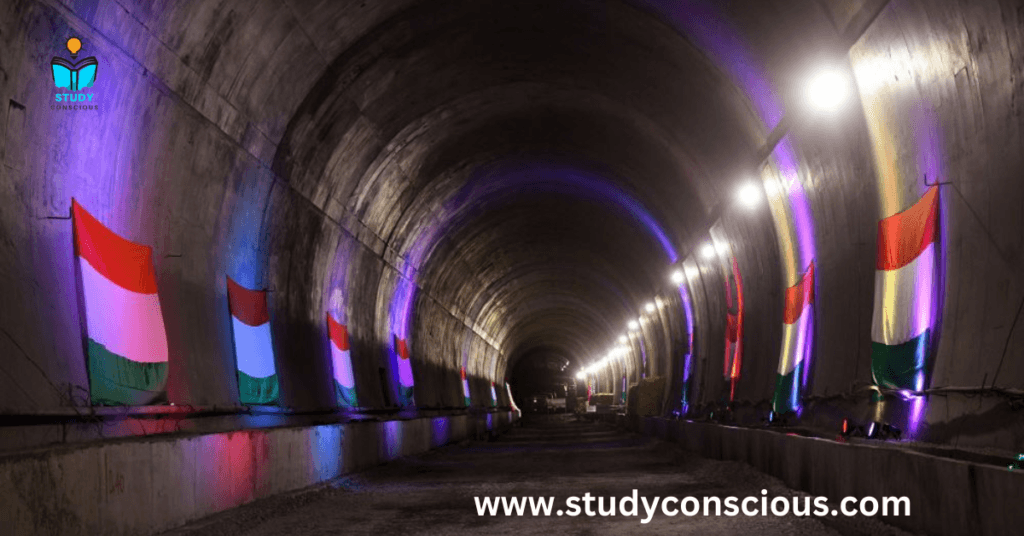
- Location:
- On National Highway-1 (NH-1), between Srinagar and Leh.
- The tunnel lies in the Ganderbal district of Jammu and Kashmir.
- Strategic Importance:
- It ensures continuous access to Sonamarg and improves connectivity to the Zojila Pass, a lifeline for the Leh-Ladakh region.
- Facilitates military logistics and troop mobility to border regions.
Specifications
- Length:
- Main tunnel: 6.5 kilometers.
- Parallel escape tunnel: 6.5 kilometers (for emergencies).
- Type:
- Bi-directional road tunnel with two lanes.
- Constructed using the New Austrian Tunneling Method (NATM).
- Width:
- Main tunnel: 7.5 meters.
- Escape tunnel: 3.5 meters.
- Height:
- Vertical clearance of 5.5 meters.
Construction and Execution
- Developer:
- The project is being executed under a Public-Private Partnership (PPP) model by Megha Engineering and Infrastructure Limited (MEIL).
- Cost:
- Estimated at around ₹2,378 crore.
- Technology Used:
- New Austrian Tunneling Method (NATM) to minimize environmental impact and ensure structural safety.
- Timeline:
- Work began in 2015, and the project was delayed due to challenges like harsh terrain and weather.
- Completion and partial opening for controlled traffic were achieved in April 2023.
Challenges Faced
- Geographical challenges like unstable mountains and seismic activity required advanced engineering solutions.
- Harsh climatic conditions and extreme snowfall hindered construction.
Problems faced before the construction of the tunnel
Difficult Terrain
- Mountainous Topography: The project is situated in a rugged, mountainous region, making excavation and transportation of materials challenging.
- Steep Gradients: The approach roads had steep gradients, complicating the movement of heavy machinery and vehicles.
Geological Challenges
- Unstable Rock Formations: The area has complex geological conditions, including loose and fractured rocks, increasing the risk of collapses during tunneling.
- Seismic Activity: Jammu and Kashmir is a seismically active region, requiring the tunnel to be designed to withstand potential earthquakes.
Limited Connectivity
- Inaccessible Sites: The remote location of the tunnel site made it difficult to transport construction materials and equipment.
- Seasonal Closure: The existing road to Sonamarg was often closed in winter, delaying construction work.
Environmental Concerns
- Preserving Ecology: The area is ecologically sensitive, requiring measures to minimize environmental impact, such as controlling dust and waste management.
- Approval Delays: Securing environmental clearances and permissions added to project delays.
Logistical Issues
- Transport of Materials: The region’s remoteness and the lack of infrastructure made the transport of machinery, cement, and other materials time-consuming and expensive.
- Labor Shortages: Attracting and retaining skilled workers in such a challenging environment was difficult.
Security Issues
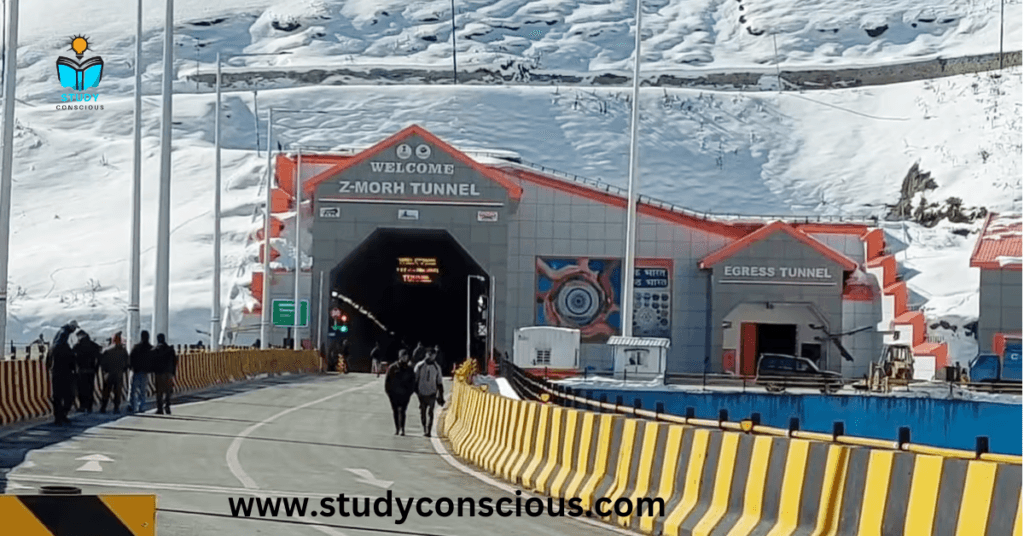
- Proximity to the Line of Control (LoC): Being close to the LoC meant the area faced potential security risks, including militant activity, which required heightened security measures.
Funding and Administrative Delays
- Initial Delays in Sanctioning: The project, initially planned in 2012, faced delays in approvals and funding allocation.
- PPP Model Challenges: Coordinating between the government and private entities under the Public-Private Partnership model introduced bureaucratic hurdles.
Technical Challenges
- Tunnel Ventilation: Ensuring proper ventilation in the tunnel during and after construction required advanced engineering solutions.
- Drainage Systems: Developing an efficient drainage system to handle water ingress in the tunnel was critical.
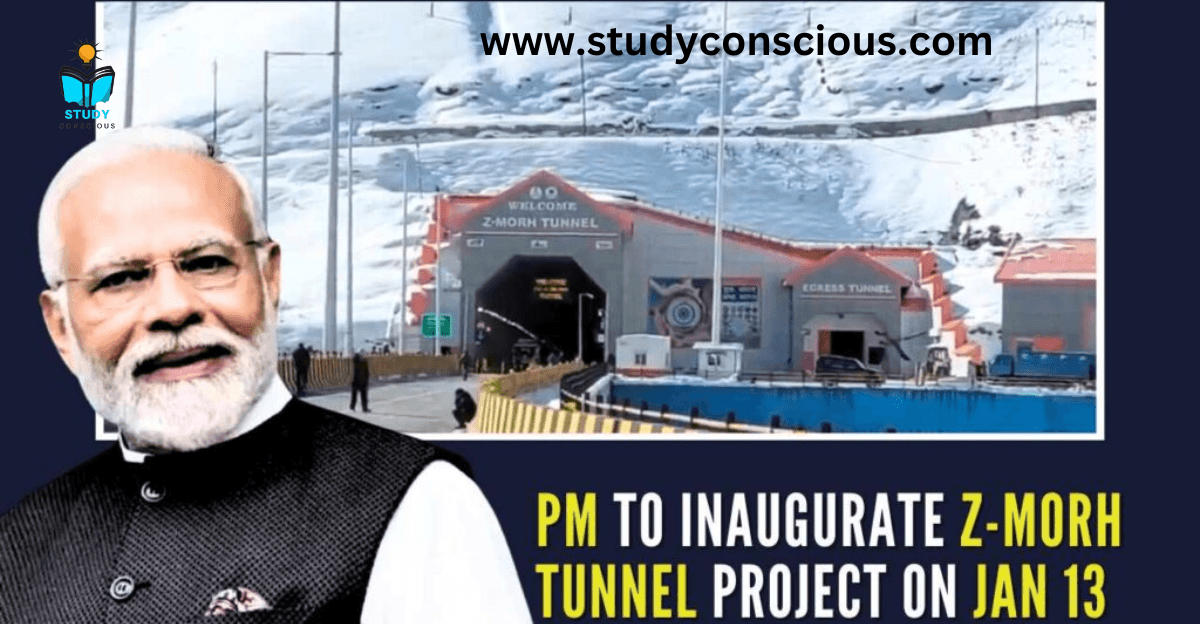


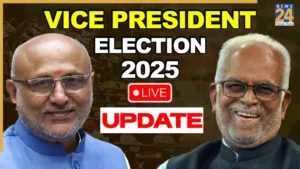



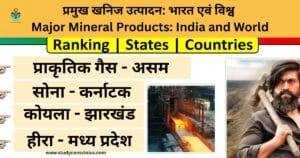
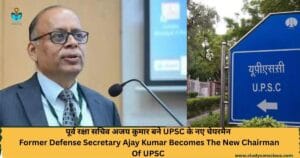



1 thought on “PM Modi opens Z-Morh Tunnel in J&K”